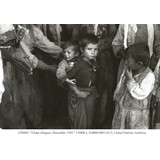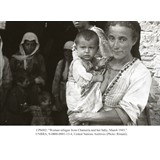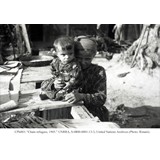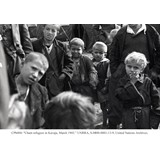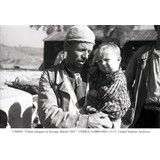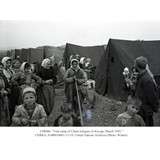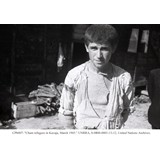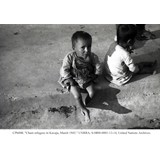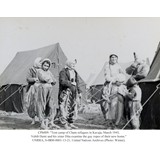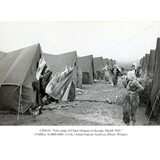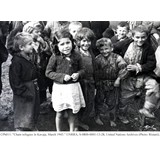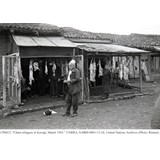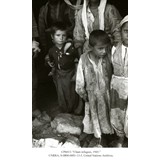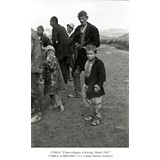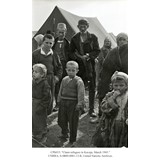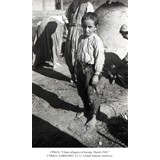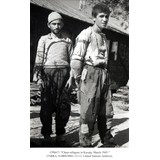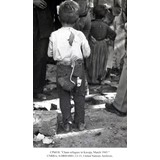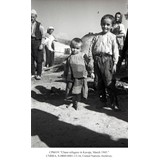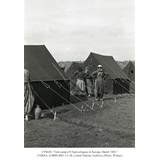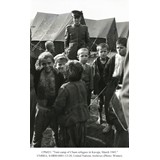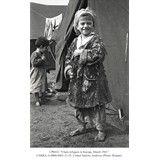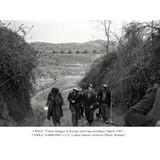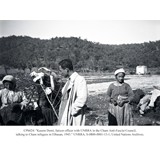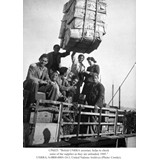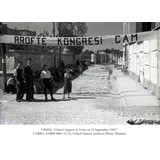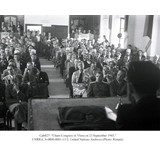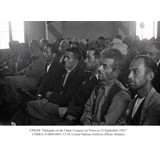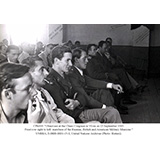
The Photo Collection of Cham Refugees
Deutsch | ShqipAlbania in 1945
Chameria is a mountainous region of the southwestern Balkan Peninsula that now straddles the Greek-Albanian border. Most of Chameria is in the Greek Province of Epirus, corresponding largely to the prefectures of Thesprotia and Preveza, but it also includes the southern-most part of Albania, the area around Konispol. It is approximately 10,000 square kilometres in size and has a current, mostly Greek-speaking population of about 150,000. The core or central region of Chameria, known in Greek as Thesprotia, could be said to be the basins of the Kalamas and Acheron Rivers. It was the Kalamas River, known in ancient times as the Thyamis, that gave Chameria its name. The Chams, known in Greek as Tsamides, are no other than Albanians living in the extreme southern part of Albanian-speaking territory. Among their traditional settlements in the now relatively sparsely inhabited region of Chameria were Gumenica/Igoumenitsa, Filat/Filiates, Paramithia/Paramythia, Parga and Margëlliç/Margariti and, in particular, many smaller villages that were abandoned and are in ruins and presently covered in vegetation. There were Cham settlements sporadically southwards as far as Preveza. When Greek forces took possession of Chameria and southern Epirus in the Balkan War of 1912, the Chams suddenly found themselves in Greece, cut off from the rest of Albania. In the following decades, in particular the 1920s, 1930s and 1940s, the vast majority of the Chams emigrated or were expelled from Chameria. With the German withdrawal from Greece in the summer and early autumn of 1944, the region was enmeshed in the initial throes of a bloody civil war. British forces, anxious to secure the Ionian coastline in order to ensure maritime supply routes, encouraged the forces of a local military commander, General Napoleon Zervas (1891-1957), to take over the region. Zervas, the founder and leader of a Greek resistance movement called the National Republican Greek League (Ethnikós Demokratikós Ellenikós Sýndesmos – EDES), became known for his brutal ethnic cleansing of the Albanians of Chameria from June 1944 to March 1945. He and many of his men regarded the Chams collectively as collaborators with the Italians and Germans, and sought vengeance. Several thousand men, women and children from Chameria found their deaths during his incursions. On 27 June 1944, his forces entered the town of Paramithia and killed about 600 Muslim Chams - men, women and children - in an orgy of violence. Many of the victims were raped and tortured before being slaughtered. Another EDES battalion advanced into Parga the next day where 52 more Albanians were killed. On 23 September 1944, the village of Spatar near Filat was looted and 157 people were murdered. Numerous young women and girls were raped, and other unspeakable crimes were committed. In the immediate aftermath, virtually the entire Cham population, defenceless and petrified, took to the hills and fled for their lives to Albania. The Chameria Association in Tirana estimates that a total of 2,771 Albanian civilians were killed during the 1944-1945 attacks on Cham villages. The cleansing of the Muslim Chams of Greece at the end of the Second World War marked the end of a one painful chapter of Cham history and the beginning of another. The Albania, to which the exhausted and starving Chams fled, had shortly before their arrival come under the control of Enver Hoxha (1908-1985) and his communist forces. The new Marxist rulers were not entirely disposed to assist their suffering compatriots. The Chams were nonetheless given refugee status and allowed to remain in Albania. It was the United Nations Relief and Rehabilitation Administration (UNRRA), active as a relief agency in Albania from September 1945 to the spring of 1947, that provided emergency assistance to the Chams by distributing tents, food and medicine to their squalid camps in Vlora, Fier, Durrës, Kavaja, Delvina and Tirana. In the years immediately following the Second World War, the Anti-Fascist Committee of Cham Immigrants campaigned for the return of the Chams to their homeland. Most of them did not want to stay in Albania anyway, in particular in view of the Stalinist-type purges taking place there. The Committee held two congresses in 1945, one in Konispol and the other in Vlora, and wrote memoranda and sent telegrams in support of its goals. The Cham issue was also brought up by Albania at the Paris Peace Conference of 1946, but all of these activities proved to be in vain. Efforts to internationalize the Cham issue fell, for the most part, on deaf ears. For several years, the Chams continued to hope that when the political situation calmed down, they would be able to return to Greece. However, this did not happen. Even today, in the twenty-first century, elderly Chams wishing to see the land of their birth, even on a short visit, are turned back at the border by Greek customs officials. Their passports are stamped persona non grata and on occasion are even torn up before their very eyes. These photos were taken in 1945 at Cham refugee camps in Albania by members of the United Nations Relief and Rehabilitation Administration (UNRRA). They are preserved in the United Nations Archives.

| Robert Elsie | AL Art | AL History | AL Language | AL Literature | AL Photography | Contact |
